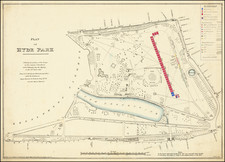The Most Iconic Mapping of Soceoconomic Status Ever Produced.
Nice example of the Booth poverty map of London, an instantly-recognizable study of poverty in the world's most important city at the end of the 19th century. Published as part of a series of maps and accompanying text volumes, this map is the underpinning of Booth's systematic representation of how wealth was unequally distributed in London.
Published in 1891, the map shows the data collected in 1889 and 1890 by the shipping magnate Charles Booth for his Inquiry into the Life and Labour of the People in London. Supposedly started following Booth's shock at an 1886 claim by Pall Mall Gazette that up to 25% of Londoners lived in poverty, the Inquiry lasted until 1903 and revealed to a surprised nation the extent of the issues faced by the working class. By 1891, the data compiled on this map, collected through volunteer efforts led by Booth, would show that a full 35% of Londoners lived in poverty.
The Inquiry was published in four iterations, each larger than the previous, with the final 1902-1903 edition comprising seventeen volumes. The 1891 second edition is notable as it contained maps to illustrate the study - the first edition did not include maps. Most of these maps were snapshots of individual neighborhoods, with only a few of the maps (including the present) showing London as a whole, with these being the most desirable.
The detail on the present map is impressive, showing the nearly street-by-street approach taken by Booth and his colleagues. The map divides the city into 134 sections each containing approximately 20,000-40,000 inhabitants each and gives the population, density, and percent of poverty of each of these in the lower right. On the map, these sections are themselves further divided and shaded according to one of seven shades of purple, corresponding to different percentage deciles of people living in poverty, ranging from less than 10% to 70%.
The geographical distribution of poverty is not surprising (Kensington has little poverty, while Whitechapel is basked in a deep purple), but the magnitude of this change is remarkable. An area of several square miles can have little poverty and few inhabitants, but an equal population can be crammed into the city center and be miles from an area which has less than a 50% poverty rate.
The map uses as its base a Stanford map of London with a scale of two inches to the mile.
The Inquiry into the Life and Labour of the People in London
The Inquiry was seventeen-year commission that investigated the lives of the working classes in London during during one of the great periods of industrialization. While other nineteenth-century surveys on the matter were conducted throughout the UK, Booth's work is considered some of the most important because of the way it was published and how it affected public opinion.
For the survey, Booth recruited his family, friends, and colleagues to conduct surveys throughout the city. These well-heeled members of upper society (including his cousin, Beatrice Webb, who would help found the London School of Economics) interviewed thousands of denizens of both wealthy neighborhoods and the most impoverished areas to gain both quantitative and qualitative information that they used to propose arguments not just on the distribution of poverty but also its root causes.
Today, we are fortunate to know many details about the Booth survey due to the papers that survive at the London School of Economics. While the published reports were carefully anonymized and any identifying information removed, Booth's notebooks present additional details that shock the reader even more than the published works.
Charles Booth: Life and Times
Charles Booth was one of the most prominent London Victorians of his time, whose LSE biography describes him as "one of the great and the good." Very wealthy from a young age given his inheritance of 20,000 pounds following his father's passing, he established an important shipping company with offices in Liverpool and New York.
Booth's interest in socioeconomic studies started in the 1860s following his brief and failed involvement in politics, which happened during a general Tory takeover of the government. As such, he decided that educating the populace regarding the problems that faced the working class was a more useful dedication of his time.
This would come to a peak with his famous inquiry, conducted from the 1880s into the 1900s, which investigated working class life in the English capital. This inquiry is remembered for a number of reasons, including the vast amounts of data that it published in volumes and select maps.
Booth survived 13 years following the end of the poverty surveys and died in 1916.











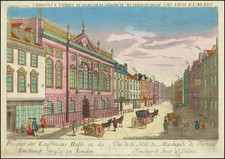
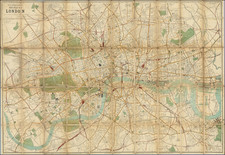
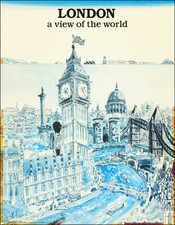
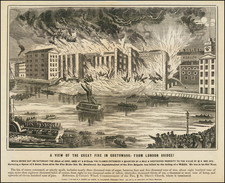
![The Heart of London [in:] Map to the Heart of London with the Compliments of MEA](https://storage.googleapis.com/raremaps/img/small/97705.jpg)
